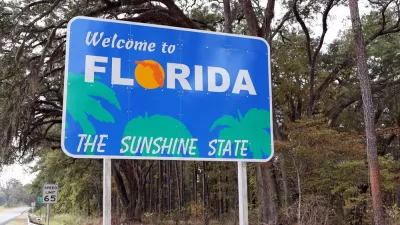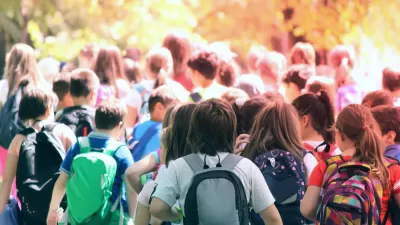Census Bureau data indicates that the shift to Sun Belt suburbs is still the majority preference. Turns out warmth, jobs, and affordable housing are a powerful triumvirate.

Although places like Seattle now enjoy an influx of urban-loving migrants, apparently the pre-2008 Sun Belt bonanza is back in full swing. Neil Irwin writes, "Where is the population growing fastest? Places that are warm, places that have ample affordable housing and places that are popular retirement destinations. It is an old story."
These trends continue a growth pattern very familiar to most of us. "Consider this: If you know how quickly a place added population from 1980 to 2000, you can predict with pretty good confidence how quickly its population grew in 2014." According to Jed Kolko, chief economist at Trulia, there is an 82 percent correlation between these two figures.
The inner-ring housing that infill advocates prefer is inexpensive, but often lies in areas that have shed jobs. "If, like the major cities of Texas, you have affordable housing because building laws allow developers to respond to higher demand by building more, then inexpensive housing is a draw. If, on the other hand, housing is inexpensive because there are so few job opportunities, then cheap housing will tend to coincide with population outflows."
FULL STORY: The Giant Retirement Community That Explains Where Americans Are Moving

Planetizen Federal Action Tracker
A weekly monitor of how Trump’s orders and actions are impacting planners and planning in America.

Maui's Vacation Rental Debate Turns Ugly
Verbal attacks, misinformation campaigns and fistfights plague a high-stakes debate to convert thousands of vacation rentals into long-term housing.

San Francisco Suspends Traffic Calming Amidst Record Deaths
Citing “a challenging fiscal landscape,” the city will cease the program on the heels of 42 traffic deaths, including 24 pedestrians.

Defunct Pittsburgh Power Plant to Become Residential Tower
A decommissioned steam heat plant will be redeveloped into almost 100 affordable housing units.

Trump Prompts Restructuring of Transportation Research Board in “Unprecedented Overreach”
The TRB has eliminated more than half of its committees including those focused on climate, equity, and cities.

Amtrak Rolls Out New Orleans to Alabama “Mardi Gras” Train
The new service will operate morning and evening departures between Mobile and New Orleans.
Urban Design for Planners 1: Software Tools
This six-course series explores essential urban design concepts using open source software and equips planners with the tools they need to participate fully in the urban design process.
Planning for Universal Design
Learn the tools for implementing Universal Design in planning regulations.
Heyer Gruel & Associates PA
JM Goldson LLC
Custer County Colorado
City of Camden Redevelopment Agency
City of Astoria
Transportation Research & Education Center (TREC) at Portland State University
Jefferson Parish Government
Camden Redevelopment Agency
City of Claremont





























